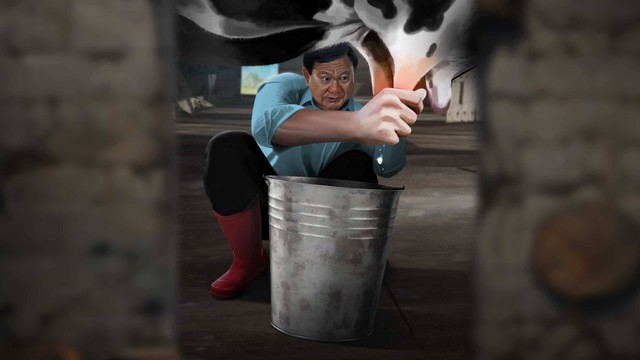Unlocking the Secrets of Light in Art and Nature
1. Exploring Light as a Medium of Artistic Expression
a. Historical perspectives on light in art: from chiaroscuro to modern techniques
Throughout history, artists have harnessed light to create depth, mood, and emotion. The Renaissance masters like Caravaggio pioneered chiaroscuro, a technique emphasizing stark contrasts between light and shadow to produce a three-dimensional effect. Moving into the modern era, artists like James Turrell have explored light as a primary medium, using it to shape perception itself. Advances in technology, such as high-dynamic-range imaging and LED art installations, allow contemporary creators to manipulate light with unprecedented precision, transforming how viewers experience space and emotion in art.
b. The psychological impact of light and shadow in visual perception
Light significantly influences our emotional and psychological states. Bright, warm lighting can evoke feelings of comfort and joy, while dim, cool tones may induce introspection or melancholy. Shadows, by creating contrast and mystery, guide the viewer’s focus and can evoke suspense or intrigue. Neuroscientific studies reveal that our brains are wired to interpret light cues to assess depth, motion, and safety, demonstrating how vital light is in shaping our perception of reality.
c. Case studies of iconic artworks that manipulate light to evoke emotion
The “Girl with a Pearl Earring” by Johannes Vermeer masterfully uses subtle lighting to create intimacy and focus on the subject’s expression. Similarly, Rothko’s color field paintings employ large blocks of luminous color to evoke meditative states. These examples underscore the power of light manipulation in art to communicate complex emotional narratives, a tradition that continues to evolve with technological innovations.
2. The Science of Light in Natural Environments
a. How sunlight interacts with atmospheric particles to create colors and effects
Sunlight interacts with molecules and tiny particles like dust and water droplets, scattering in various directions—a process known as Rayleigh scattering. This phenomenon explains why the sky appears blue during the day and why sunsets display vibrant reds and oranges. The angle of the sun influences the intensity and hue of these colors, a principle exploited by both nature and artists seeking to capture fleeting atmospheric effects.
b. The role of light in shaping ecosystems and animal behaviors
Many animals depend on natural light patterns for survival. For example, diurnal animals are active during daylight, aligning their behaviors with sunlight cycles, while nocturnal species have adaptations for low-light conditions. Migratory birds and sea turtles use celestial cues, like the position of the sun and stars, to navigate. These behaviors highlight how light patterns are integral to ecological balance and evolutionary processes.
c. Phenomena such as iridescence, bioluminescence, and their natural origins
Iridescence, seen in butterfly wings and peacock feathers, results from microscopic structures that refract light, producing shifting colors. Bioluminescence, the emission of light by organisms like deep-sea creatures and fungi, arises from chemical reactions involving luciferin and luciferase enzymes. These phenomena demonstrate how natural systems manipulate light at the micro and macro levels to serve functions like communication, camouflage, or attracting mates.
3. Artistic Techniques for Harnessing Light and Color
a. Innovations in pigments and materials that reflect or refract light
Modern materials such as dichroic glass, holographic films, and luminescent pigments allow artists to create surfaces that change appearance with the viewer’s perspective or lighting conditions. These innovations extend traditional palettes, enabling dynamic visual effects that mimic natural phenomena like iridescence or bioluminescence, thus bridging science and art.
b. Modern digital tools enabling dynamic light effects in art installations
Digital projection mapping, LED arrays, and interactive sensors facilitate immersive environments where light responds to viewer movement or environmental factors. Artists like teamLab create virtual worlds where light patterns evolve in real time, deepening engagement and narrative capacity—demonstrating the fusion of technology and creative expression.
c. The use of light patterns to guide viewer experience and narrative in art
Strategic placement of light can direct focus, evoke mood, or suggest movement within an artwork. For example, chiaroscuro employs high-contrast lighting to spotlight key figures, while contemporary installations might use rhythmic light sequences to lead viewers through a story space, enhancing emotional resonance and understanding.
4. Patterns of Light in Nature: Beyond Spectra
a. The fractal geometry of natural light patterns in landscapes and biological structures
Many natural forms exhibit fractal patterns—self-similar structures repeated at different scales. The branching of trees, the arrangement of leaves, and even river networks demonstrate fractal geometry. Light interacting with these structures creates complex patterns of shadow and illumination, inspiring artists and scientists to study their recursive beauty and functional efficiency.
b. Light diffraction and interference patterns in natural phenomena
Natural examples include the diffraction patterns seen in thin oil films or soap bubbles, where light bends around edges, producing colorful fringes. Interference patterns also occur in phenomena like the iridescence of peacock feathers or the shimmering surface of a pond, illustrating the wave nature of light and its capacity to generate intricate visual effects.
c. The significance of recurring light patterns in ecological and evolutionary contexts
Recurring light patterns influence behaviors such as camouflage, communication, and mate selection. For example, the reflective scales of certain fish or insects serve both as camouflage and signaling tools, shaped by evolutionary pressures. Understanding these natural patterns informs biomimicry, inspiring new optical technologies and artistic designs.
5. The Intersection of Light, Art, and Technology
a. Interactive art installations that respond to natural and artificial light
Sensors and programmable LEDs enable artworks that change dynamically with environmental conditions or viewer interaction. For example, Olafur Eliasson’s installations often incorporate natural light with digital controls, creating immersive experiences that deepen understanding of light’s role in perception.
b. Light as a tool for storytelling in multimedia and virtual reality experiences
VR environments utilize precise light manipulation to evoke realism or surreal states, guiding emotional responses and narrative flow. By simulating natural lighting conditions or fantastical scenes, artists and storytellers craft compelling worlds that reveal the profound influence of light on perception.
c. Emerging technologies: laser, holography, and their potential to deepen our understanding of light
Lasers enable precise control of coherence and directionality, leading to applications like holography that can project three-dimensional images in space. These tools not only expand artistic possibilities but also serve scientific purposes, such as measuring atmospheric phenomena or exploring quantum optics, thus enriching our comprehension of light’s fundamental properties.
6. Cultural and Philosophical Dimensions of Light in Art and Nature
a. Symbolism and spiritual interpretations of light across cultures
In many traditions, light embodies divinity, enlightenment, and purity. For instance, in Christianity, the concept of divine light signifies spiritual truth, while in Eastern philosophies, light often symbolizes wisdom and liberation. These cultural interpretations influence artistic expressions, shaping how societies perceive and utilize light as a symbol.
b. Philosophical questions about perception and reality shaped by light illusions
Optical illusions demonstrate how light manipulations challenge our perception of reality. The famous Ames room or the Moiré patterns reveal that what we see can be a construction of light and shadow, raising questions about the nature of perception and how consciousness interprets sensory data.
c. How understanding natural light informs ethical considerations in environmental art
Artists and environmentalists increasingly recognize the importance of respecting natural light cycles and ecosystems. Sustainable lighting practices and ecological sensitivity in art installations ensure that the manipulation of light enhances awareness without disrupting natural patterns, fostering ethical engagement with our environment.
7. Deepening the Connection: From Light Patterns in Nature to Artistic Innovation
a. How studying natural light patterns inspires new artistic methods and mediums
Artists draw inspiration from natural phenomena such as the fractal patterns of coastlines or the iridescence of butterfly wings to develop innovative techniques. Photonic crystals and holography, for example, replicate natural light behaviors, creating new visual experiences that blur the line between science and art.
b. The role of scientific research in advancing artistic exploration of light
Research in optics, quantum physics, and material science provides artists with tools to manipulate light at microscopic levels. Developments like metamaterials enable the creation of invisibility cloaks or ultra-reflective surfaces, which expand artistic possibilities and deepen our understanding of light’s properties.
c. Collaborative projects bridging science, art, and technology to unlock new secrets of light
Interdisciplinary initiatives, such as the Light Art Collection or scientific-art residencies, foster innovation. These collaborations allow scientists to communicate complex light phenomena through visual art, inspiring new research directions and artistic expressions rooted in natural and technological insights.
8. Returning to the Parent Theme: Patterns and Light as Foundations of Perception
a. How insights into natural light and patterns enhance our understanding of visual cognition
By examining how light creates patterns—whether fractals, interference, or bioluminescent signals—we gain a deeper understanding of how our visual system processes complex stimuli. This knowledge informs the development of artificial vision systems and enhances artistic techniques that leverage natural light effects.
b. The importance of interdisciplinary approaches in unraveling the complexities of light
Integrating physics, biology, neuroscience, and art leads to more comprehensive insights into light’s role in perception and communication. Such approaches facilitate innovations in environmental design, virtual reality, and artistic expression, reflecting the interconnectedness of natural and human-made systems.
c. Final thoughts on how art and nature together reveal the profound secrets of light and pattern
As demonstrated through historical art, scientific phenomena, and technological advances, light and pattern are fundamental to understanding our universe. They serve as bridges between sensory experience, natural laws, and creative expression, continually inspiring new ways to explore and appreciate the profound secrets of light in both art and nature. For a broader foundation on these themes, explore Understanding Light and Patterns: From Hydrogen Spectra to Starburst Games.


















